I like the changing of seasons. Wellington, lo though I loved it, only had two seasons: Beautiful and Sideways Raining. Transitioning away from Winter and into Spring here marks two things for this project: I get to flip over to a new menu again, and this jump back to spring marks me entering my third year working through this book. So far I’ve completed 43 out of 107 total recipes, or just about 40%.
When I told Sarah that, she looked at me steadily and said slowly “It feels like we’ve been doing this…for a long. Time. ”
I let her pick my inaugural spring recipe, and she narrowed it down to about 5 for me to start with. Her annoyance at our kitchen being in a constant mess is offset by flipping through the pages of the cookbook and getting excited to try the next thing. One can’t help but get a little excited and inspired by it. We finally corralled it down to this recipe and the one I’ll be doing next, which involves white asparagus.
For this dish, a cylindrical shell of frozen mandarin ice is filled with a creamy mixture of orange, vanilla, and sassafras. The cylinder sits atop crumbs of vanilla shortbread, and is surrounded by pools and dollops of vanilla cream, root beer pudding, and mandarin sauce. The assembly is garnished with fresh anise hyssop leaves.
Two of the more exotic ingredients found in this recipe are root beer extract and sassafras extract. When I was in Wellington, I found a bag of sassafras root in our Commonsense Organics grocery shop. Having seen it called for in this book, I bought the root (it was chopped into bits about the size of oatmeal), and put it in a bottle with some vodka. I figured if I can make vanilla extract by soaking vanilla beans in vodka, why not sassafras? I ended up letting them soak for almost a year; the resulting liquid smelled mildly root-beery, but not terribly punchy, and because I ended up moving I decided to ditch it and start all over again here. This time, however, I took the easy route and just bought some from the intertubez. I was a little excited to find that the sassafras extract was remarkably similar to my homemade batch. Both of these items are readily available via resources for candy or soda-making (the store I’m buying my homebrewed beer supplies from sells both, I noticed).
This and many other recipes in the book use Anise Hyssop as a flavorful garnish, usually for dessert dishes. I kept an eye peeled for this the entire time I was in NZ but never found it. I had the same luck here, so about 3 months ago I bought some seeds, and decided to just try to grow some. I sprouted maybe 10 plants or so, and kept them under a grow light for about a month before I noticed that the leaves of the plants didn’t quite look like the photos in the book. Some quick wikipedia searching explained why: the person who sold me the seeds had mislabeled Hyssop seeds, which are notably different. So I had to start all over again. My anise hyssop plants are only a couple months old but they’re big enough for me to use here, so it’s all good.
This recipe also calls for an obscene amount of vanilla beans. By “obscene” I mean 10. Vanilla is one of the most frequently-overpriced items I’ve ever shopped for. You can buy single beans in the snobby grocery store near our apartment for about $14 a pop, which is just stupid. I wrote out at work asking if anyone knew where I might find cheaper beans; several people recommended www.saffron.com, which has a store in the city. One friend wrote saying he had recently been to Tahiti, and had brought bag a large bag of vanilla beans, which he’d purchased there very cheaply. He offered me some, saying they were the richest, most fragrant beans he’d ever come across. Indeed they were; when I sliced one open, the inside was moist and sticky, and when I scraped the inside of the bean to get the seeds out, I ended up getting a gooey vanilla ‘bean paste’ of sorts. These things are kinda amazing.
I was dreading making the mandarin ice cylinders; something told me they would be exceptionally difficult and fragile to get right. They’re made from a pudding of mandarin juice and agar, which is spread on strips of acetate, rolled into tubes, and frozen into shape. The tubes are injected with a creamy mixture of vanilla, Cointreau, cream, and sassafras extract. A small aside: to fill the cylinders for 10 servings of this dish, you need 30ml of this cream. The recipe here yields about 2L, which is just absurd. There’s no tricky manipulation needed to make this cream, just some cooking of stuff in a saucepan, so one could easily quarter or even eighth it and have plenty for this. This was especially annoying because you need almost an entire bottle of Cointreau if you’re honoring the recipe, which isn’t particularly cheap. I have no idea what to do with 1970ml of this stuff after having completed this dish. Ideas?
The cylinders turned out to be not terribly difficult to assemble at all though. Once made, they’re plated atop a mound of shortbread crumbs. The photos in the book for this are extremely misleading; they show large chunks of crumbled shortbread rather than the fine powder that the recipe actually yields. I doubt there’s a big taste difference, but I kinda liked the large rocklike structures shown in the book, so I kept some of the baked shortbread that I made and crumbled them coarsely to give a similar appearance.
The cylinder/shortbread assembly is surrounded by vanilla sauce, rootbeer pudding, mandarin sauce, and a powder made of malt, demerara sugar and salt. The recipe specifically calls for ‘malt powder’, which I erroneously read and thought was malted milk powder. So the day I was cooking I got a bit caught out by this. I tried a few local stores to see if they carried malt powder, which pastry chefs and bakers use for breadmaking, but no dice. Malted milk powder, however, is just malt powder mixed with sugar and milk; so I pressed on with it, knowing that the malty flavor would be less and the sweetness would be more, but the milk wasn’t going to interfere too negatively with all this cream.
As I was making the various sauces for this, I started to get pretty excited trying to picture what the final dish was going to taste like. The rootbeer sauce was especially great; I found some rootbeer up at Berkeley Bowl that’s super-delicious and has a really nice oaky note in it. I imagined this whole thing was going to taste like an orange sherbert rootbeer float, which reminded me of my dad, who introduced me to rootbeer floats when I was a kid.
As it turns out, my theory was pretty close. This thing exceeded my expectations by a long shot though. It was incredibly delicious! Sarah said “I get tired of saying over and over ‘I think this one might be my favorite’, but this one really might be.” I couldn’t help but agree; I’ve read a lot about how Alinea dishes seek to build an emotional bridge between each dish and something in the diner’s memory, but I’ve been too distracted by the ‘neatness’ of everything to have experienced it directly until now. This dish is served in the middle of a full Tour menu, so it’s not quite a dessert but more a fun palette cleanser, and I love the idea of using a rootbeer float to do that. Making this dish was largely a pure joy and an excitement to do, and sums up neatly everything that I like about this project.
So far this year, I’ve been keeping a spreadsheet detailing expenditures on this project (I like data visualization art, so I have plans for this). Here’s what this recipe looked like. It’s a little misleading, as I already had stuff like glucose, gelatin sheets, agar, etc…this is just what I bought deliberately and uniquely for this recipe.
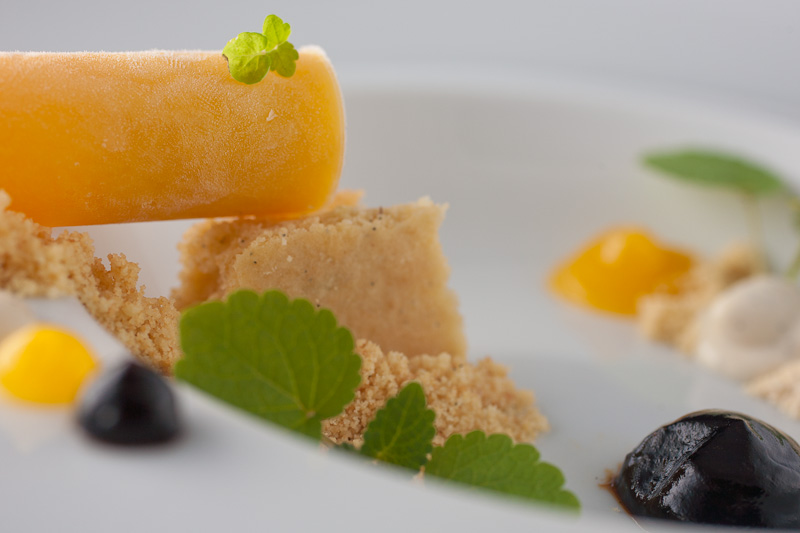
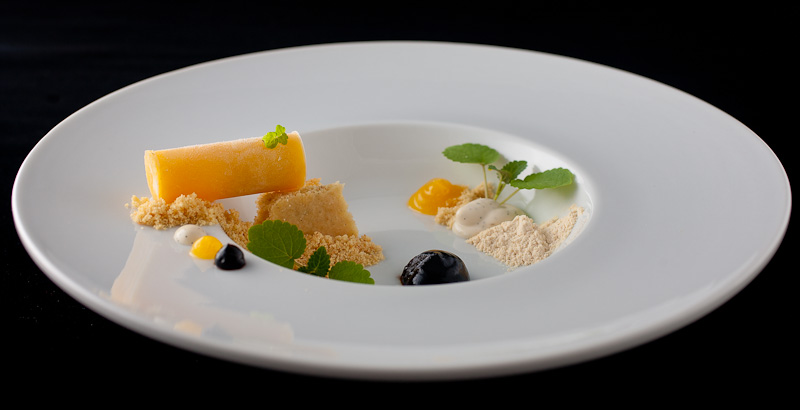
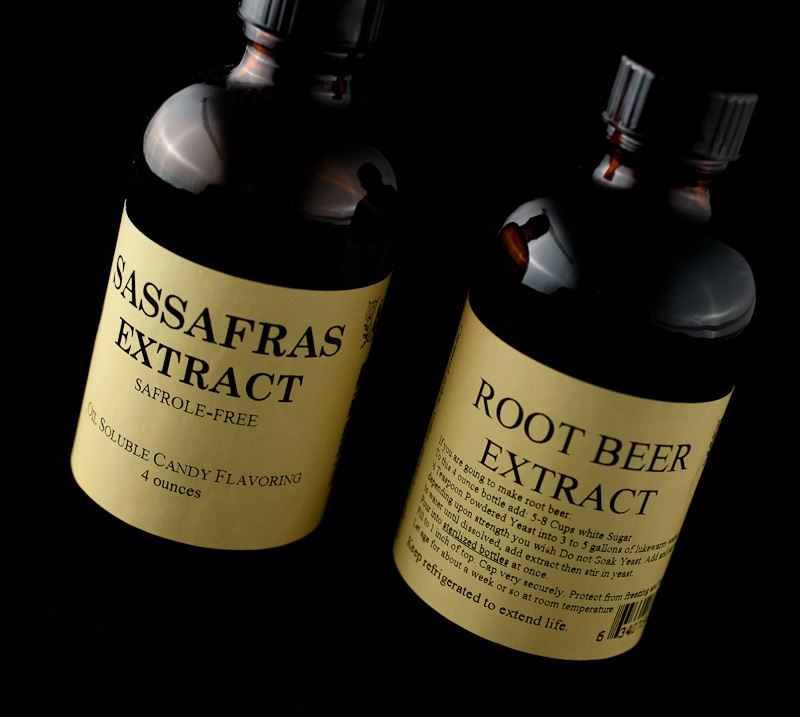
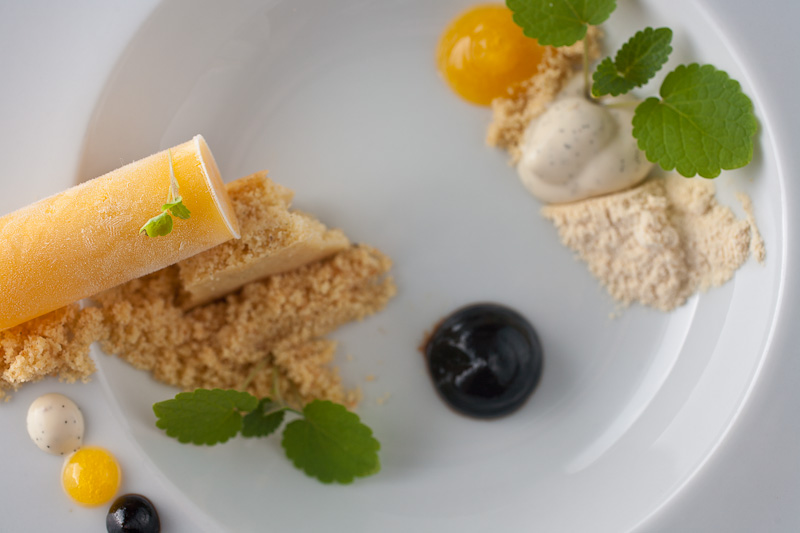
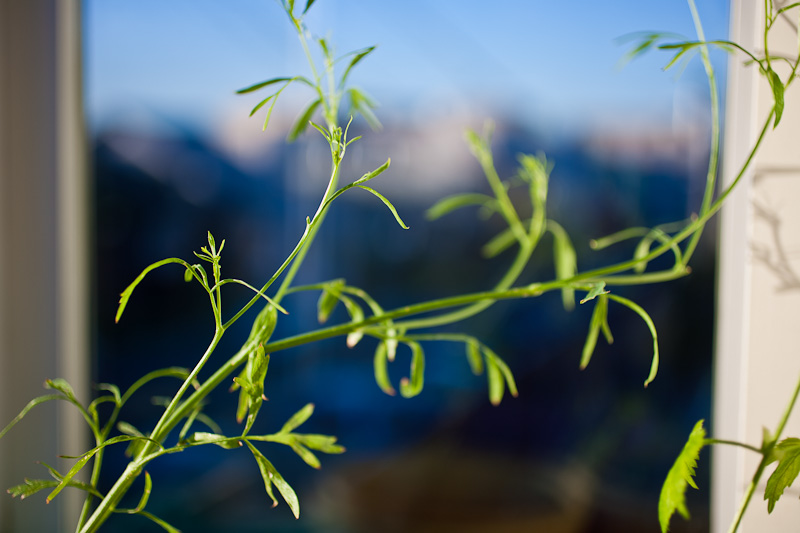
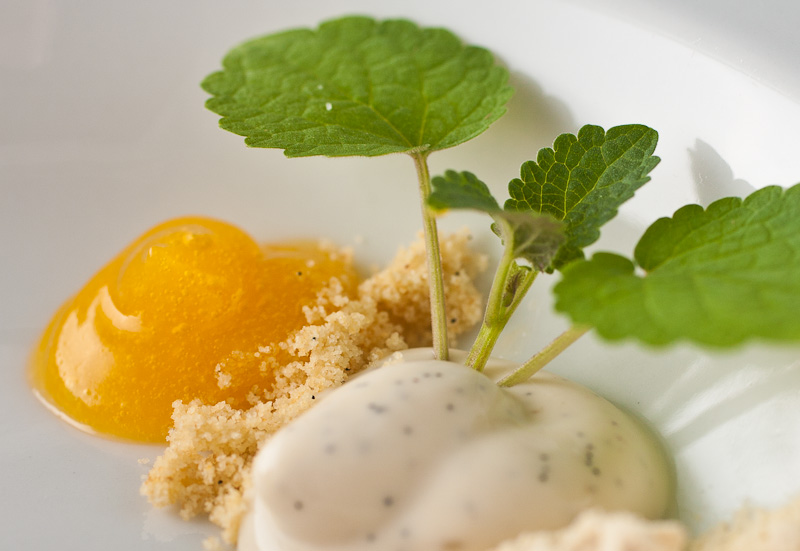
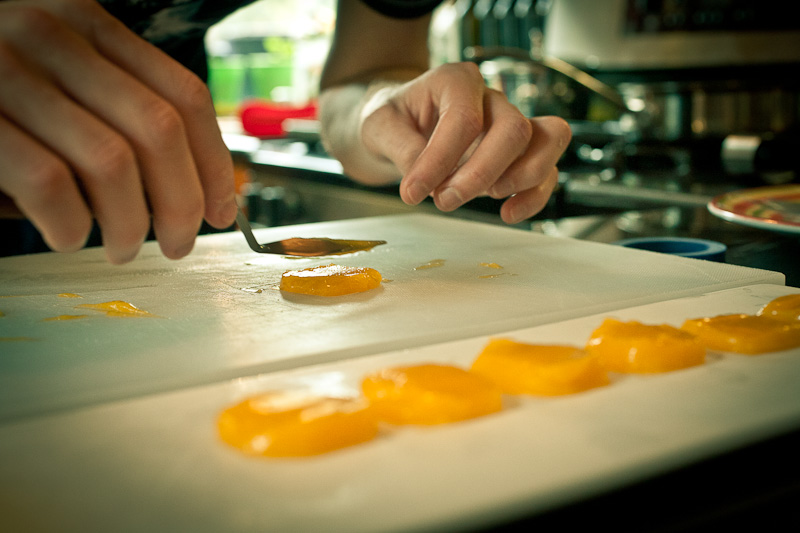
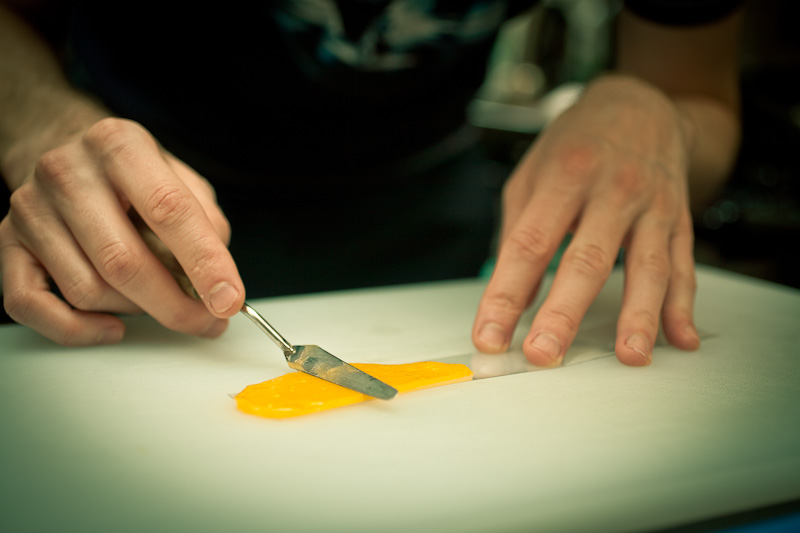
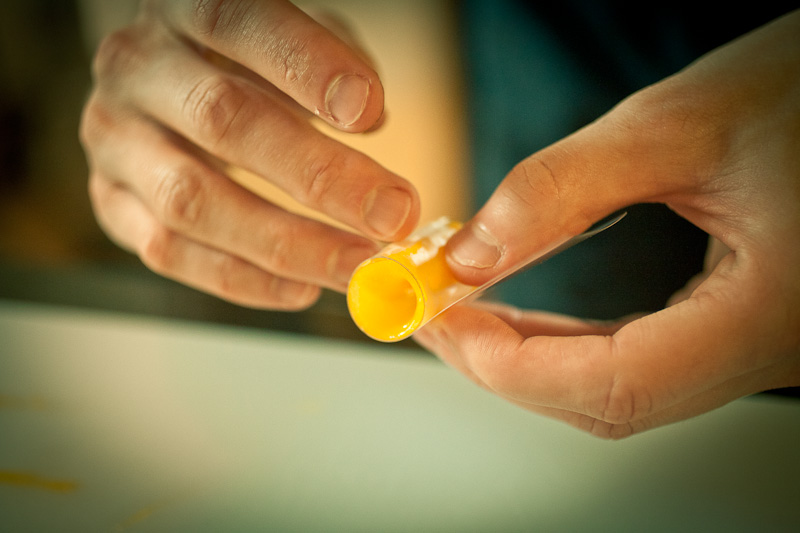
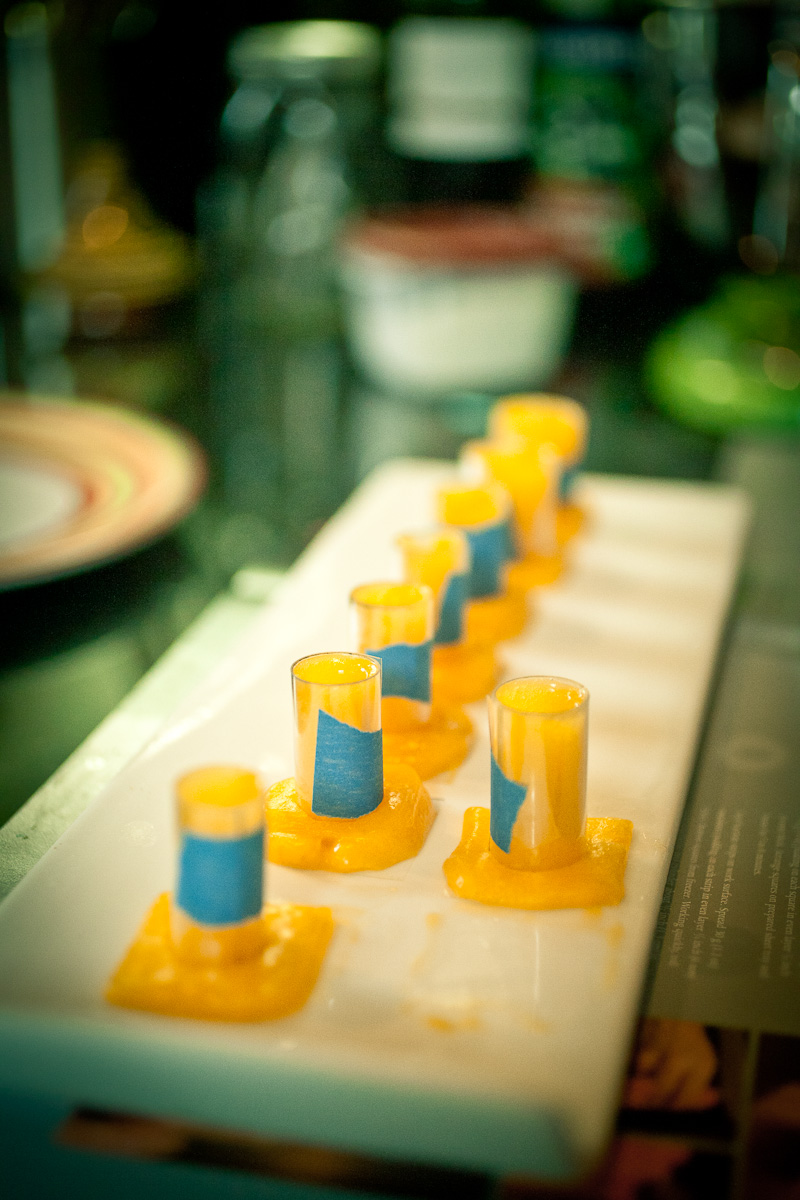
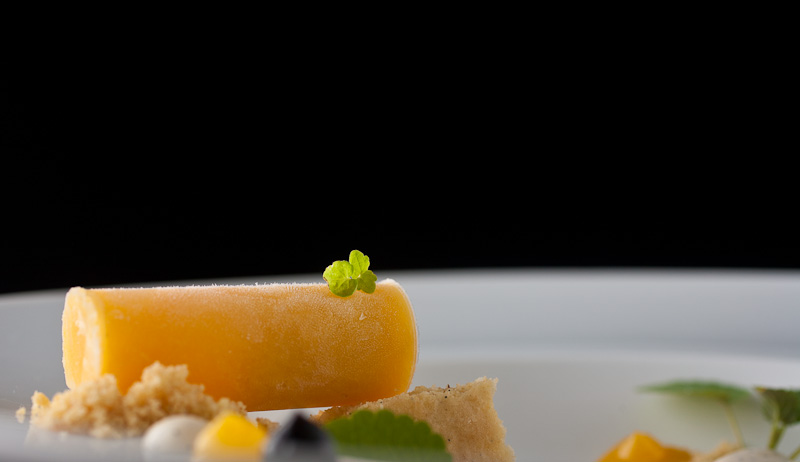

Wow, that looks incredible! Great job on those cylinders. I made them once with a different flavor and found them to be a pain in the ass. I concluded that making 48 of them for a Lazy Bear weekend would be prohibitively difficult.
The problem I had was that they kept ending up with a wonky seam where the two sides of the acetate met. Did yours do that, and you just put the seam-side down on the plate?
As it happens, I also ordered root beer extract a couple weeks ago, planning to use it for a LB dish, but they mistakenly sent the worst, most fake-smelling strawberry extract instead.
Thanks man! I was afraid of getting a weird seam too, and was really surprised when they came out without one (there’s the tiniest indentation, but one would never notice it unless you were really looking for it). The one thing I think I did that was worth noting was that I switched from Dick Blick art store acetate to food-grade acetate that I got at Spun Sugar in Berkeley. It’s quite a bit thinner than art-store-grade acetate, sort of like a stiff saran wrap? You probably have way more experience with this than I do, but it seemed to make a difference and was way easier to work with.
Lame about the strawberry extract (and also a little funny); if it helps, I got my extract from http://caneandreed.com/extractsandflavors.htm. The site design is so awesome.
Still planning on coming to a lazy bear SF event at some point; I’ve been a little busy at work, but I’ll make it there eventually!
We have some seats available on Friday night.